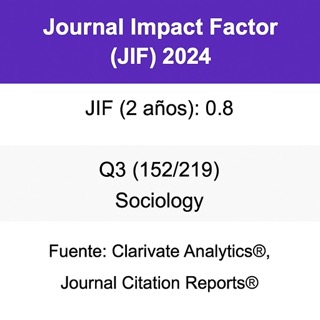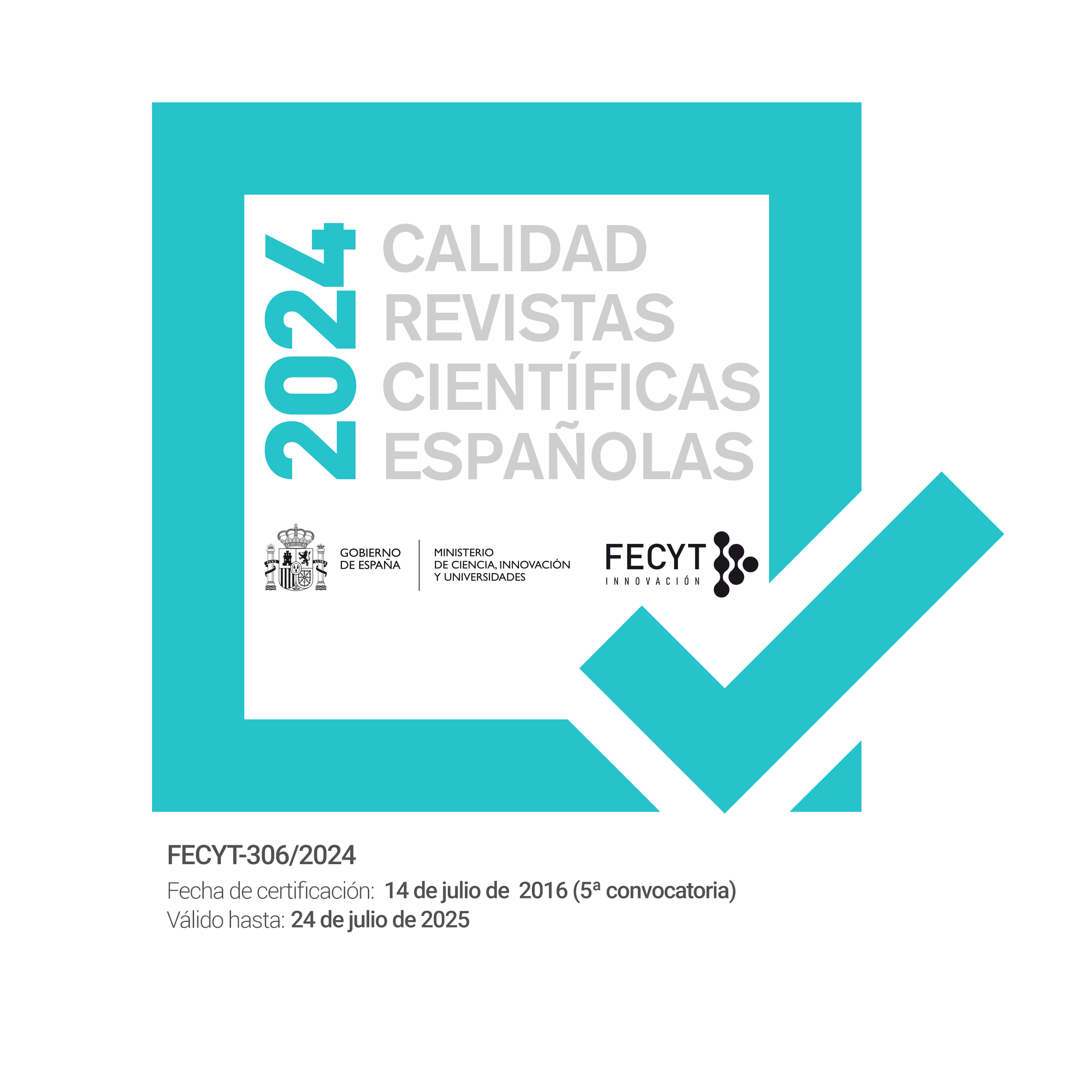¿Qué queda del mito de la violación real? Un estudio de caso basado en análisis de sentencias judiciales
DOI:
https://doi.org/10.22325/fes/res.2022.137Palabras clave:
mito de la violación real, agresiones sexuales, cultura de la violación, sentencias judiciales, perspectiva de géneroResumen
Las agresiones sexuales son un fenómeno social, que tiene como principales víctimas a las mujeres y las niñas. El modo en que los agentes del sistema judicial, como parte de la sociedad, perciben y valoran estos delitos está influido por una serie de mitos y creencias colectivos. Este artículo presenta los resultados de un estudio de caso, que analiza el mito de la violación real a partir de las sentencias penales de la Audiencia Provincial de Madrid dictadas por delitos de agresión sexual entre 2016 y 2018. A partir de un análisis de contenido con enfoque cuantitativo, se examina en qué medida las características de los hechos juzgados coinciden con las del mito, y cómo éste puede influir en el fallo. Las conclusiones muestran que, aunque el patrón que describe el mito de la violación real no se cumple, sin embargo, algunas de sus características siguen influyendo en las decisiones judiciales.
Citas
Alemany, A., Fernández, L., y Marín, B. (2020). Respuesta judicial a la violencia sexual que sufren los niños y las niñas. Ministerio de Igualdad.
Amnistía Internacional (2018). Ya es hora de que me creas. Un sistema que cuestiona y desprotege a las víctimas. AI España.
Anderson, I. (2007). What is a typical rape? Effects of victim and participant gender in female and male rape perception. British Journal of Social Psychology, 46(Pt 1), 225-245. https://doi.org/10.1348/014466606X101780
Ballesteros, E., y Blanco, F. (2021). «Yo sí te creo». Estereotipos sexistas hacia las víctimas de agresión sexual. Un estudio de caso sobre la Audiencia Provincial de Baleares (2018). IQUAL. Revista de Género e Igualdad, (4), 89-108.
Barjola, N. (2018). Microfísica sexista del poder. El caso Alcàsser y la construcción del terror sexual. Virus.
Bohner, G., Eyssel, F., Pina, A., Siebler, F., y Viki, G.T. (2009). Rape myth acceptance: Cognitive, affective and behavioural effects of beliefs that blame the victim and exonerate the perpetrator. En M. Horvath, y J. Brown (Eds.). Rape: challenging contemporary thinking (pp. 17-45). Willan Publishing.
Bourke, J. (2007). Rape: Sex, Violence, History. Shoemaker & Hoard.
Brownmiller, S. (1976). Against our will: Men, women and rape. Penguin.
Burt, M. (1980). Cultural myths and supports for rape. Journal of personality and Social Psychology, 38(2), 217-230. https://doi.org/10.1037/0022-3514.38.2.217
Camplá, X., Gancedo, Y., y Novo, M. (2019b). Mitos y estereotipos sobre delitos sexuales de la Defensa en procesos penales. V Congreso iberoamericano de Justicia Terapéutica. La Plata, Argentina. https://www.researchgate.net/publication/339849544_Mitos_y_estereotipos_sobre_delitos_sexuales_de_la_Defensa_en_procesos_penales
Camplá, X., Marcos, V., Fariña, F., y Arce, R. (2019a). Sexual violence against women: Variables involved in judicial decision making. En J. Sanmarco y E. Arias (Eds.), Annual Conference of the European Association of Psychology and Law (pp. 105-106). European Association of Psychology and Law.
Camplá, X., Novo, M. y Arce, R. (2018). Análisis de mitos, sesgo y estereotipos en las sentencias penales absolutorias por violencia sexual de pareja. IV Congreso Internacional Ibero-Americano de Justicia Terapéutica. Braga, Portugal.
Camplá, X., Novo, M., y Arce, R. (2017). Fuerzas policiales y mitos sobre las agresiones sexuales: una revisión sistemática de la evidencia. En C. Bringas, y M. Novo (Eds.), Psicología jurídica: conocimiento y práctica (pp. 287-303). Universidad de Sevilla.
Cazorla, C. (2019). Carencias y desafíos de las estadísticas oficiales para la medición de la violencia sexual en España (2010-2018). Anuario Internacional de Criminología y Ciencias Forenses, (4), 15-62.
Cazorla, C. (2021). Aproximación al perfil criminológico de las agresiones sexuales en grupo: un análisis a partir de su casuística jurisprudencial. Revista Electrónica de Ciencias Criminológicas, (6). https://ojs.ehu.eus/index.php/eguzkilore/article/view/22672
Cea, B., Camplá, X., Vilariño, M., y Novo, M. (2020). Victimización primaria y secundaria en la violencia sexual contra mujeres adultas en sentencias penales. En A. M. Martín, F. Fariña, y R. Arce (Eds.), Psicología jurídica y forense: investigación para la práctica profesional (pp. 121-138). SEPJF.
Clay-Warner J., y McMahon-Howard J. (2009). Rape reporting: 'Classic rape' and the behavior of law. Violence and Victims, 24(6), 723-743. https://doi.org/10.1891/0886-6708.24.6.723
De la Cruz, M. A. (2014). Estudio descriptivo de una muestra de víctimas de agresión sexual. Psicopatología clínica legal y forense, 14(1), 25-49.
Ekman, M., y O’Sullivan, M. (1989). Hazards in detecting deceit. En D. C. Raskin (Ed.), Psychological methods in criminal investigation and evidence (pp. 297-332). Springer.
Estrich, S. (1986). Rape. The Yale Law Journal, 95(6), 1087-1184.
Feist, A., Ashe, J., Lawrence, J., McPhee, D., y Wilson, R. (2007). Investigating and detecting recorded offences of rape. Research Development and Statistics Directorate, Home Office. https://ncvc.dspacedirect.org/handle/20.500.11990/1353
Gerger, H., Kley, H., Bohner, G., y Siebler, F. (2007). The acceptance of modern myths about sexual aggression scale: Development and validation in German and English. Aggressive Behavior, 33(5), 422-440. https://doi.org/10.1002/ab.20195
Gregory, J., y Lees, S. (1996). Attrition in Rape and Sexual Assault Cases. British Journal of Criminology, 36(1), 1-17.
GREVIO (2020). Primer informe de evaluación. España. Convenio de Estambul. Consejo de Europa. https://violenciagenero.igualdad.gob.es/marcoInternacional/informesGREVIO/docs/InformeGrevioEspana.pdf
Hines, A., Colwell, K., Hiscock-Anisman, C., Garrett, E., Ansarra, R., y Montalvo, L. (2010). Impression management strategies of deceivers and honest reporters in an investigative interview. The European Journal of Psychology Applied to Legal Context, 2(1), 73-90.
Hohl, K., y Stanko, E. A. (2015). Complaints of rape and the criminal justice system: Fresh evidence on the attrition problem in England and Wales. European Journal of Criminology, 12(3), 324-341. https://doi.org/10.1177/1477370815571949
Holleran, D., Beichner, D., y Spohn, C. (2010). Examining charging agreement between police and prosecutors in rape cases. Crime & Delinquency, 56(3), 385-413. https://www.savethechildren.es/sites/default/files/imce/docs/informe_justicia_esp_abuso_sexual_infantil_vok-2.pdf
Kaufmann, G., Drevland, G. C. B., Wessel, E., Overskeid, G., y Magnussen, S. (2003). The importance of being earnest: Displayed emotions and witness credibility. Applied Cognitive Psychology, 17(1), 21-34.
Kelly, L. (2001). Routes to (in)justice: a research review on the reporting, investigation and persecution of rape cases. HMCPS.
Kelly, L. (2008). Combating violence against women: minimum standards for support services. Council of Europe. https://www.coe.int/t/dg2/equality/domesticviolencecampaign/Source/EG-VAW-CONF(2007)Study%20rev.en.pdf
Kelly, L., Lovett, J., y Reagan, L. (2005). A Gap or a Chasm?: Attrition in reported rape cases. Home Office Research Studies, 293. Home Office Research, Development and Statistics Directorate.
Leverick, F. (2020). What do we know about rape myths and juror decision making?. International Journal of Evidence and Proof, 24(3), 255-279.
Lila, M., Gracia, E., y García, F. (2013). Ambivalent sexism, empathy and law enforcement attitudes towards partner violence against women among male police officers. Psychology, Crime and Law, 19(10), 907-919. https://doi.org/10.1080/1068316X.2012.719619
Lonsway, K. A., y Fitzgerald, L. F. (1994). Rape myths in review. Psychology of Women Quarterly, 18(2), 133-164. https://doi.org/10.1111/j.1471-6402.1994.tb00448.x
Lousada, J. (2020). El enjuiciamiento de género. Dykinson.
Lovett, J., y Kelly, L. (2009). Different Systems, Similar Outcomes? Tracking Attrition in Reported Rape Cases across Europe. London, UK: Child and Women Abuse Studies Unit.
Marcos, L. (Coord.). (2017). Ojos que no quieren ver. Los abusos sexuales a niños y niñas en España y los fallos del sistema. Save the Children. https://www.savethechildren.es/sites/default/files/imce/docs/ojos_que_no_quieren_ver_27092017.pdf
Martin, E. K., Taft, C. T., y Resick, P. A. (2007). A review of marital rape. Aggression and Violent Behavior, 12(3), 329-347.
Ministerio del Interior (2017). Informe sobre delitos contra la libertad e indemnidad sexual en España. Secretaría de Estado de Seguridad.
Ministerio del Interior (2018). Informe sobre delitos contra la libertad e indemnidad sexual en España. Secretaría de Estado de Seguridad.
Möller, A., Söndergaard, H. P., y Helström, L. (2017). Tonic immobility during sexual assault - a common reaction predicting post-traumatic stress disorder and severe depression. Acta obstetricia et gynecologica Scandinavica, 96(8), 932-938. https://doi.org/10.1111/aogs.13174
Neuendorf, K. A. (2011). Content Analysis-A Methodological Primer for Gender Research. Sex Roles, 64, 276-289. https://doi.org/10.1007/s11199-010-9893-0
O’Neal, E. N., Tellis, K., y Spohn, C. (2015). Prosecuting intimate partner sexual assault: Legal and extra-legal factors that influence charging decisions. Violence Against Women, 21(10), 1237-1258.
Ortega Lorente, J. M. (2018). Breves reflexiones sobre necesidades formativas de jueces y juezas. Boletín Comisión Penal, Monográfico Perspectiva de Género en el Proceso Penal, 10(1), 3-6.
Parenti, M. (2005). The cultural struggle. Seven Stories Press.
Peramato, T. (2020). “Anteproyecto de Ley Orgánica de Garantía Integral de la libertad sexual. El consentimiento”. Boletín Comisión de Violencia de Género, 11, 3-14.
Pérez-Ramírez, A., Giménez-Salinas Framis, A., González, J. L., y Soto, J. E. (2020). Perfiles de agresores sexuales que agreden a una desconocida. Cuadernos de la Guardia Civil: Revista de Seguridad Pública, 60, 105-126.
Peterson, Z. D., y Muehlenhard, C. L. (2004). Was it rape? The function of women's rape myth acceptance and definitions of sex in labeling their own experiences. Sex Roles, 51(3), 129-144. https://doi.org/10.1023/B:SERS.0000037758.95376.00
Planty, M., Langton, L., Krebs, C., Berzofsky, M., y Smiley-McDonald, H. (2013). Female victims of sexual violence, 1994-2010. Washington, D.C.: Department of Justice, Bureau of Justice Statistics. https://www.ojp.gov/ncjrs/virtual-library/abstracts/female-victims-sexual-violence-1994-2010
Randall, M. (2011). Sexual Assault Law, Credibility, and 'Ideal Victims': Consent, Resistance, and Victim Blaming. Canadian Journal of Women and the Law, 22(2), 397-433.
Román, Y. (Coord.) (2012). La justicia española frente al abuso sexual infantil en el entorno familiar. Un análisis de casos a la luz de los estándares internacionales de derechos humanos. Madrid: Save the Children.
Rubio, M. J., y Monteros, S. (2001). Las víctimas de agresiones sexuales ante el sistema jurídico-penal. Anuario de Psicología Jurídica, 11(1), 59-77.
Ruiz Castillo, P. (2007). El maltrato a la mujer: enfoque psicoanalítico a través de su historia y su clínica. Síntesis.
Salanueva, O., y Zaikoski, D. (2015). Violencia sexual y discurso jurídico. Análisis de sentencias penales en casos de delitos contra la integridad sexual. UNLPam.
Sleath, E., y Bull, R. (2012). Comparing Rape Victim and Perpetrator Blaming in a Police Officer Sample: Differences Between Police Officers with and Without Special Training. Criminal Justice and Behavior, 39(5), 646-665. https://doi.org/10.1177/0093854811434696
Sleath, E., y Woodhams, J. (2014). Expectations about victim and offender behaviour during stranger rape. Psychology, Crime & Law, 20(8), 798-820. https://doi.org/10.1080/1068316X.2013.876500
Smith, O., y Skinner, T. (2017). How Rape Myths Are Used and Challenged in Rape and Sexual Assault Trials. Social & Legal Studies, 26(4), 441-466. https://doi.org/10.1177/0964663916680130
Spohn, C., y Holleran, D. (2001). Prosecuting sexual assault: A comparison of charging decisions in sexual assault cases involving strangers, acquaintances, and intimate partners. Justice Quarterly, 18(3), 651-688.
Stewart, D. N., y Jacquin, K. M. (2010). “Juror perceptions in a rape trial: Examining the complainant's ingestion of chemical substances prior to sexual assault”. Journal of Aggression Maltreatment & Trauma, 19, 853-874.
Suárez, E., y Gadalla, T. (2010). “Stop Blaming the victim: A meta-analysis on rape Myths”. Journal of Interpersonal Violence, 25(11), 2010-2035.
Subdirección General de Sensibilización, Prevención y Estudios de la Violencia de Género. (2020). Macroencuesta de Violencia contra la Mujer 2019. Ministerio de Igualdad. https://violenciagenero.igualdad.gob.es/violenciaEnCifras/macroencuesta2015/Macroencuesta2019/home.htm
Sugar, N., Fine, D., y Eckert, L. (2004). Physical injury after sexual assault: Findings of a large case series. American Journal of Obstetrics and Gynecology, 190(1), 71-76.
Tardón, B., y Pérez, J. (2016). Cultura de la violación: complicidad y silencio en torno a la violencia sexual. Rebelión. https://rebelion.org/cultura-de-la-violacion-complicidad-y-silencio-en-torno-a-la-violencia-sexual/
Temkin, J. (2016). The Role of the Legal Profession in Protecting Judicial Independence. En The Culture of Judicial Independence in a Globalised World (pp. 156-161). Brill Nijhoff.
Temkin, J., Gray, J., y Barrett, J. (2018). Different Functions of Rape Myth Use in Court: Findings From a Trial Observation Study. Feminist Criminology, 13(2), 205-226. https://doi.org/10.1177/1557085116661627
Temkin, J., y Krahé, B. (2008). Sexual assault and the justice gap: A question of attitude. Hart Publishing.
Toledo, P., Bodelón, E., Tur, N., y Martínez, J. (2016). Marc jurídic internacional, estatal i autònomic de les violències sexuals. G.R. Antígona i Creación Positiva.
Torres, M. (Coord.) (2020). Estudio sobre la respuesta judicial a la violencia sexual que sufren mujeres y niñas en las Islas Baleares, 2020. Madrid: Ministerio de Igualdad. https://www.mujeresjuristasthemis.org/phocadownload/THEMIS_Estudio_Balear_ESPANOL_DEFINITIVO%20180321.pdf
Vézina, J., y Hérbert, M. (2007). Risk Factors for Victimization in Romantic Relationships of Young Women: a Review of Empirical Studies and Implications for Prevention. Trauma Violence & Abuse, 8(1), 33-66.
Vigarello, G. (1998). Historia de la violación: siglos XVI-XX. Cátedra.
Vrij, A. (2008). Detecting lies and deceit: Pitfalls and opportunities. John Wiley and Sons.
Watherhouse, G., Reynolds, A., y Egan, V. (2016). Myths and legends: The reality of rape offences reported to a UK police force. The European Journal of Psychology Applied to Legal Context, 8(1), 1-10. https://doi.org/10.1016/j.ejpal.2015.04.001
Whisnant, R. (2013). Feminist Perspectives on Rape. The Stanford Encyclopedia of Philosophy. https://stanford.library.sydney.edu.au/entries/feminism-rape/
Publicado
Cómo citar
Número
Sección
Licencia
Derechos de autor 2022 MARÍA JOSÉ RUBIO MARTIN, Francisca Blanco Moreno, Esmeralda Ballesteros Doncel

Esta obra está bajo una licencia internacional Creative Commons Atribución-NoComercial 4.0.
Todas las publicaciones de la Revista Española de Sociología se realizarán bajo una licencia abierta Creative Commons de Reconocimiento 4.0 Internacional (CC BY 4.0). Dicha licencia establece que los autores son los poseedores de los derechos de propiedad intelectual de sus trabajos, que pueden redistribuirse a cambio de un reconocimiento adecuado. Para más información de la licencia Creative Commons, consultar aquí.
Una vez aceptado un artículo para su publicación, la Revista Española de Sociología solicitará al denominado "autor para la correspondencia" la aceptación de una licencia obligatoria Creative Commons incluida en un acuerdo o contrato de publicación.




